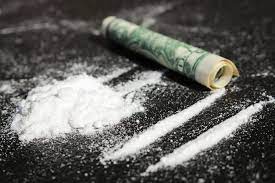Urban youths consume more alcohol, drugs, and other substances than their rural counterparts because rural communities have stronger community childcare systems while costs of purchasing these products are low, with users spending on average US$2 to satisfy their needs, a recent study on drug consumption and substance abuse amongst Zimbabwean adolescents and youth has shown.
The root drivers of alcohol and drug abuse are the death of parent(s), poverty, idleness, absent parents, broken homes, inadequate parenting practices, social influence, stress, deviant behaviour traits and experimentation.
UNICEF collaborated with the Zimbabwean government and assessed three gender-sensitive reports for the study’s methodology, which included two studies and one implemented experience programme.
Inputs also came from Muthengo Development Studies (MDS), Zimbabwe Civil Liberties and Drug Network (ZCLDN), including Youth Advocates Zimbabwe (YAZ) to better understand the root causes of drug consumption and substance abuse among Zimbabwean adolescents to inform programming.
“While the youngest user in the ZCLDN study was 14 years old, the median age of first drug use was 18 years old. This is comparable with findings from YAZ where the youngest Alcohol Drug and Substance Abuse user was 15-year-old. According to the MDS study the youngest user was 10 years old, and the 10 to 18 years old is the most vulnerable age group,” read the brief titled Let the Evidence Speak, published in September 2023 that showed consumption of alcohol, drugs and other substances starts as early as adolescence.
According to ZCLDN, the most commonly abused alcohol, drugs, and other substances are cannabis (67%), cough syrup (47%), crystal meth (36%), illegal alcohol (31%), medicines (13%), crack (3%), cocaine powder (3%), and heroin (2%).
In the 30-day period, ZCLDN evaluated daily use, finding that 76.5% smoked skunk, 75.1% smoked cannabis, 57.3% drank illegal alcohol, 56.0% took cough medications, and 50.6% drank legal alcohol.
“Alcohol, drugs, and other substances’ abuse is higher in urban areas than rural. The main reason is the stronger community childcare system and closer parental care that prevails in rural communities,” read the report with MDS saying taking these products is not confined to lower socio-economic quintiles as “abusers from wealthy families consume the more expensive substances like cocaine, crack, heroin, and legal alcohol.”
In terms of gender distribution, 41% of girls and 59% of boys abuse alcohol, drugs, and other substances.
On frequency of use, the study reported that skunk, cannabis, illegal alcohol, cough medicines, and liquors approved by the Liquor Traders Association of Zimbabwe (LTAZ) were used by more than 50% of the abusers.
According to the MDS in the study, most common environments where drugs are used are dealers’ homes or places of operation, with the highest level of consumption at 46%, 32% used these substances at a friend’s house, and 9% claimed sellers are widely known in communities and sell indiscriminately to all ages.
“Costs are low, with users spending, on average, US$2 to satisfy their needs. Across Alcohol Drugs and Substance Abuse distribution transit corridors, such as Chipinge, the cost of these is even lower and easy to acquire,” read the brief.
The effects of alcohol, drugs, and other substance abuse are severe, as YAZ discovered disturbing patterns directly attributable to such abuse, including 70% of gang violence among school children, 15% of Intimate Partner Violence and Gender Based Violence (GBV) cases involving adolescents and young people, 40% of suicide attempts, and an increase in school dropouts, with 60% dropping out after being expelled for such abuse.
UNICEF suggested as part of the planned activities to curb this abuse, increase public education and awareness campaigns against substance misuse, particularly among adolescents and young people.
“The initiation, through outreach programmes, of social behaviour change interventions. The establishment of partnerships between schools, communities, and local authorities to promote healthy behaviours among adolescents and the young people,” read the study.
There must also be facilitation of high-quality rehabilitation services, which include life skills training for young people (both in- and out-of-school) focusing on the vulnerable, skills development around drug education, and livelihood skills for recovering individuals.
Decriminalisation of substance abuse must also happen, recommended the study, which requires strengthening the skills of staff and healthcare workers, and the training and sensitisation of law enforcement agents.
There must also be increased investments into after-school programmes, advocacy and orientation for relevant ministries, departments, Civic Society Organisations and youth groups with the Zimbabwe National Drug Master Plan (2020-2025) and the newly established National Committee on the Elimination of Drug and Substance Abuse.

